
Article contents

How much you should pay into your pension all depends on the lifestyle you want in retirement. There’s 3 official retirement standards; minimum, moderate and comfortable to use as guidelines – the more financially comfortable, the bigger the pension you’ll need. Monthly contributions can range from £160 per month to £1,200 for a 25 year old. And the older you are the more you'll need to add.
Worried about your future and how much you should have in your pension? Don’t worry, most of us are! Pensions aren’t that easy to understand and neither is how much you should be saving or need in your pension to have a comfortable retirement – we’ll get to that in a moment. But there’s no need to panic, if done right, building up a good pension pot is easier than it seems.
Let’s run through how much you should be paying into a pension to financially live the lifestyle you want.
First things first, to work out how much you should be paying into your pension, you’ll need to estimate how much you think you’ll need as a retirement income. Luckily, there’s 3 official easy to understand retirement standards:
These were produced by the Pensions and Lifetime Savings Association and are the official Retirement Living Standards.
Here’s how much you’ll need each year as a retirement income for each category:
Was it what you were expecting? As a rule of thumb, you’ll need slightly less than you earn at the end of your career to maintain a similar lifestyle.
And to clarify a few things, these figures don’t include any housing costs, they assume you have a mortgage and that it will be paid off by the time you retire. If you think you’ll still have a mortgage or be renting, you’ll need to add these costs on top.
If you want little extras in retirement, such as treating your grandchildren to nice presents, or fancy holidays, you’ll need to add these too.
The problem is, how do you build a pension pot to give you a pension income you’d like? Well, it comes from your own pension and the State Pension.
We’re going to mention the State Pension a lot, so just to make sure you’re aware of the details, let’s run through what it is quickly.
The State Pension is the pension you’ll get from the government when you reach the official retirement age, called the State Pension age – currently 66 but rising to 68 in the future. Check the age you'll get the State Pension with our State Pension age calculator.
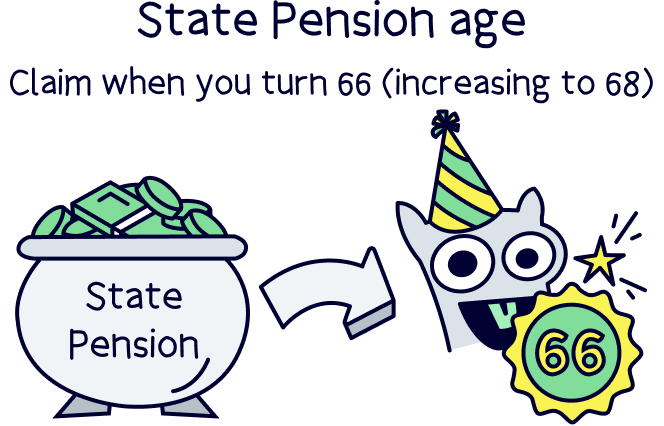
To qualify for the State Pension, you’ll need to have paid at least 10 years worth of National Insurance contributions, and to get the full amount, you’ll need to have paid 35 years worth.
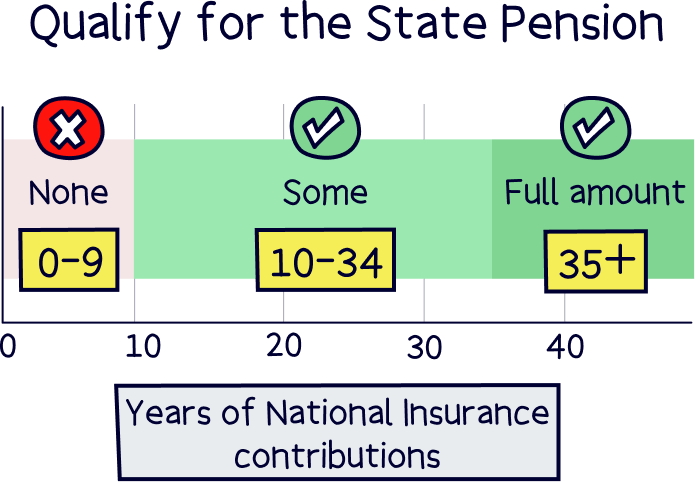
Currently, the State Pension is £230.25 per week, which works out as £11,973 per year. Not a lot – you’ll likely struggle to live off just this in the future (it's less than minimum wage). This is why a private pension is a great idea, it will help you boost your retirement income (and if done right, by a lot).
We’ll cover private pensions in a bit, but if you’re in a rush, check out PensionBee¹, they’re 5* rated and make it super easy to save for your retirement. Here’s our PensionBee review to find out more. Alternatively, you can compare the best pension providers.
Nuts About Money tip: you can estimate your total pension pot at retirement and your yearly retirement income with our pension calculator.
To get the yearly income to suit your retirement lifestyle here's what you need to save in your pension pot by the time you retire.
If you expect to receive the State Pension, here’s what you’ll need to save within a private pension:
If you don’t expect to get the State Pension, here’s what you’ll need to save in a private pension:
Fairly hefty figures aren’t they? If they seem out of reach right now, don’t panic just yet – if you use the right saving tactics your pension pot can grow very large over time, and we’ll run through how to increase yours below.
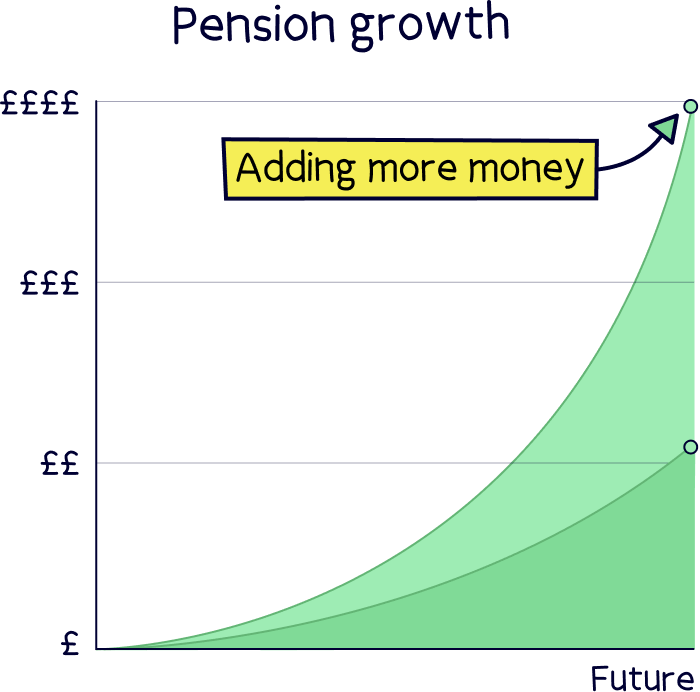
Note: we’ve also got a guide to learn more about how much you need in your pension pot.
To clarify, to get a yearly pension income of £13,400 (minimum retirement standard), you’ll have to qualify for the State Pension and then have a private pension of £88,958. And if you don’t qualify for the State Pension, you’ll need a private pension of £348,295. Make sense?
You’ll likely struggle with this level of income, and ideally should aim for moderate, if not a comfortable level. To reach these levels, you’ll need £564,615 for the moderate retirement standard and £881,719 for a comfortable retirement (including the State Pension).
Our retirement income calculator can help you estimate how much money you will have in retirement based on your current pension pot.
Before we get too far ahead, let’s just make sure we’re all on the same page when it comes to pensions – we’ve described the State Pension above, but there’s also a private pension that you’ll use to build your pension pot.
This is a pension that’s in your name, it’s private to you, rather than a government pension. You decide how much you want to pay in, and you decide when you’d like to take it, as long as you’re over 55 (57 from 2028).
To confuse things a little, there’s actually different types of private pensions, which are a workplace pension, and a personal pension.
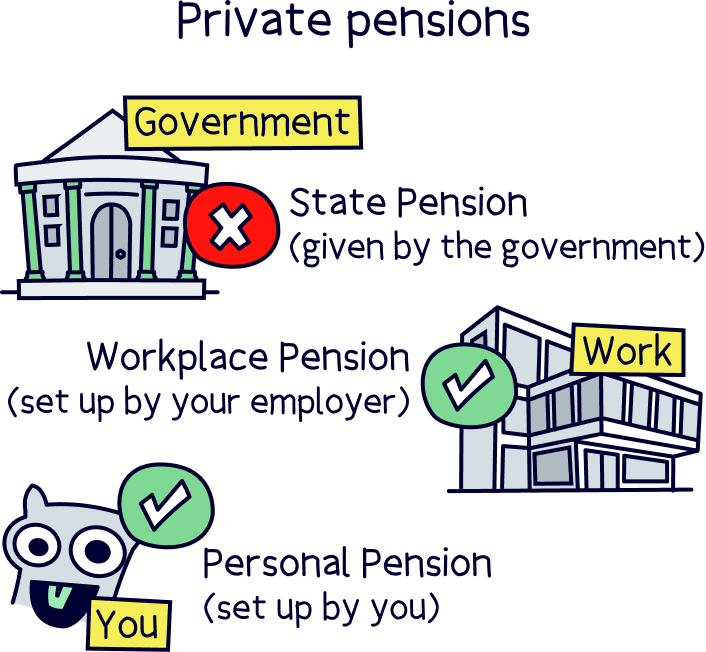
If you’re employed, you’ve probably got one of these. By law, every employer has to set up a workplace pension scheme for their employees as part of the auto-enrolment scheme.
With these pensions, you’ll contribute at least 5% of your salary per year, and your employer will contribute 3% too – it's like a free pay rise! And the money is paid into your pension before you pay tax on your income, so it’s tax-free too.
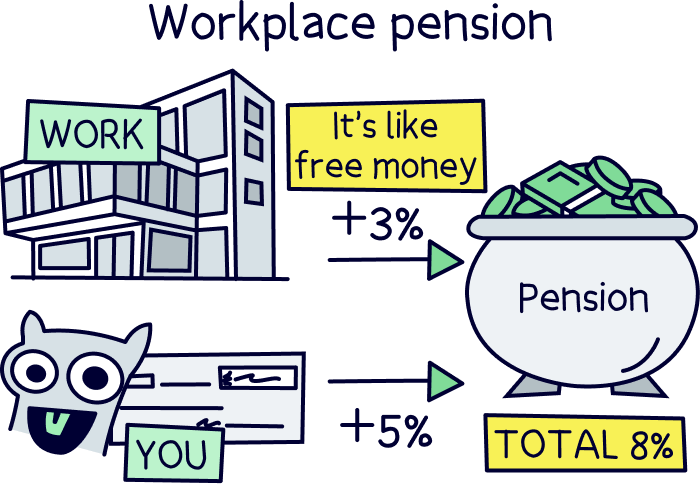
Some lucky employees might even have an employer who contributes more than they legally have to as well – they might match your contributions if you decide to contribute more.
Nuts About Money tip: if they offer this, definitely take them up on it, if you can afford it of course.
The downside to these pensions is that the employer chooses which pension company to use, and often, they’ll pick any one just because they have to, rather than the best provider out there, so they can have high fees and poor investment performance. Which brings us onto personal pensions, where you get to pick a provider.
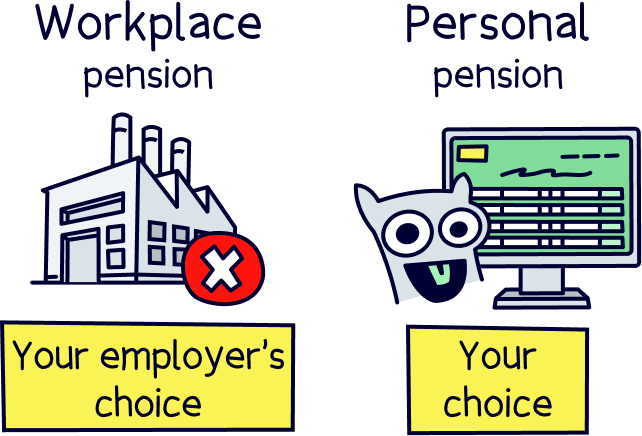
With a personal pension, you set this up yourself (and it’s very easy to do). If you’re self-employed, this is your only pension option (we’ve got a guide to the best private pensions for the self-employed by the way), but they’re also a great addition to your workplace pension if you are employed.
You get to choose which pension provider you want to use, so you can choose the best one for you – one that’s easy to use, has low fees and a great track record of growing money over time.
On top of that, you get a massive 25% bonus on everything you contribute to your pension, automatically from the government. We’re not joking!
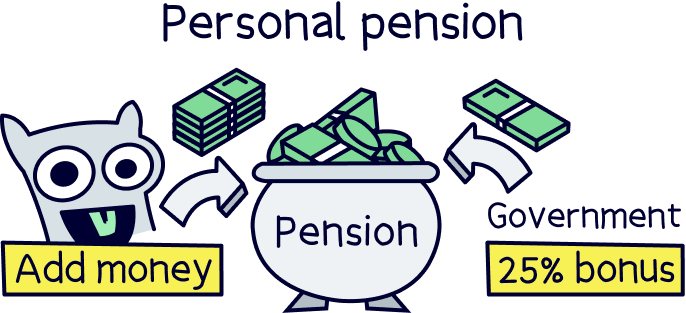
That’s because saving into a pension is tax-free (you technically get tax relief), but when you contribute to a personal pension, you would have already paid tax on your income, and so this is refunded back into your pension pot.
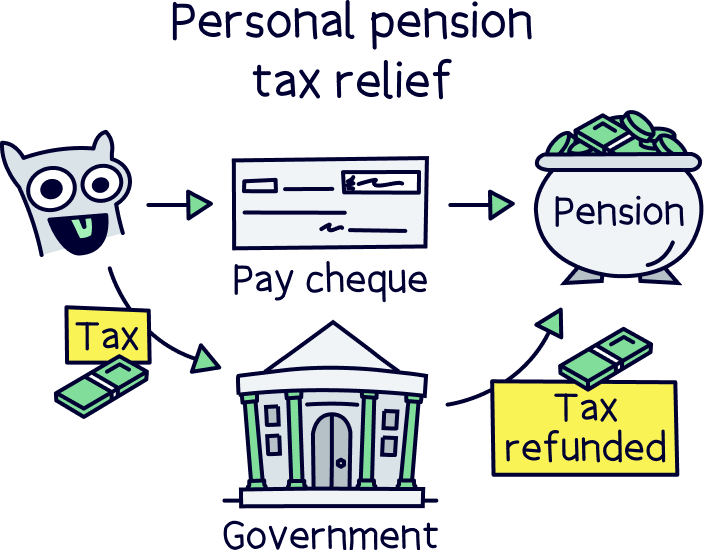
If you’re a higher rate taxpayer (40% tax), or additional rate taxpayer (45%), you can also claim tax paid at these rates too (by using a Government launches online tool or by adding it to your Self-Assessment tax return if you do one).
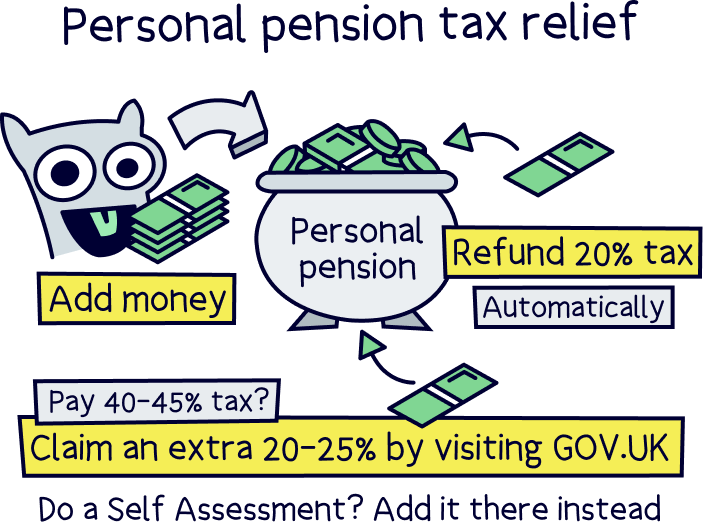
A personal pension can really make the difference between a small retirement income and a very large retirement income – and we highly recommend opening one.
If you want a personal pension but you're not sure where to find one, check out PensionBee¹, we've rated them 5*and think they are great. You can also compare all your options with the best personal pensions.
There’s also a self-invested personal pension, which is just like a regular personal pension, with all the tax-free benefits, except instead of the experts managing your money and growing it over time, the investment decisions are all up to you.

They often have lower fees, as the experts aren’t managing things for you. However, we only recommend these if you know what you’re doing – this is your pension after all. You can learn more with our guide to self-invested personal pensions, and if you’re keen to open one, here’s the best SIPPs.
We’re going to use the average pension pot to work out how much you might have in your pension now, and work out how much you should be paying into your pension (below). So let’s quickly run through that now.
You might want to compare what your pension contributions are with others, however, unfortunately the average pension pot in the UK is very low! Meaning most people's pension contributions are also lower than they actually need to be to achieve a comfortable living in retirement.
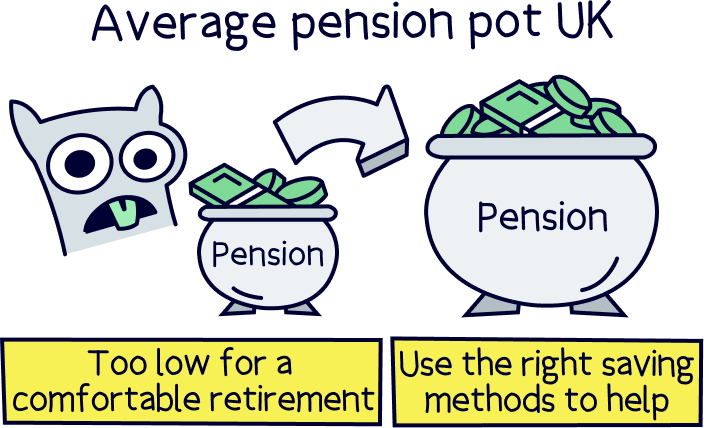
At Nuts About Money we recommend not looking at the average contributions of everyone else. Instead, use the retirement standards to work out your own pension savings target and then work out your target monthly contributions from that – all covered below.
Here’s the average pension pot by age:
Data: ONS (Pension wealth: wealth in Great Britain)
So, how much do you actually need to pay into your pension to achieve these retirement standards? Let’s take a look.
This includes the State Pension as part of your retirement income (so lower pension savings totals), and intending to retire at 68 (when you qualify for the State Pension).
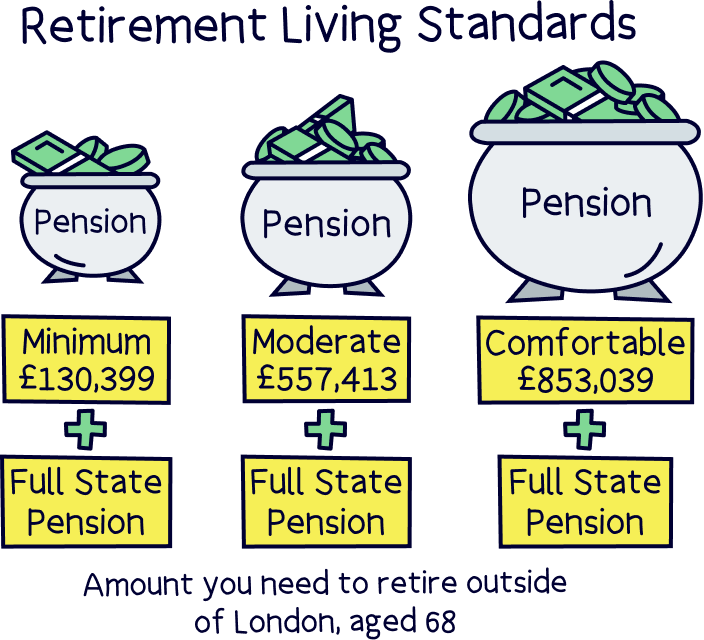
Let’s break it down by 25, 40, 50 and 60 years old – and with nothing in your pension currently, and then starting with the average pension pot for your age (in the table above).
The monthly contributions also include the tax-free saving element (tax-free contributions), but don’t include any employer contributions into a workplace pension.
So, if you’re saving into a workplace pension scheme, you can reduce this by 3% (or more if your employer contributes more), and if you’re saving into a personal pension, you can reduce this by 20% as you’ll be getting a bonus from the government every time you pay in.
For instance, if you wanted to aim for £100 total contributions per month, you’d only have to make contributions of £80 into a personal pension, and the government will add the extra £20 automatically.
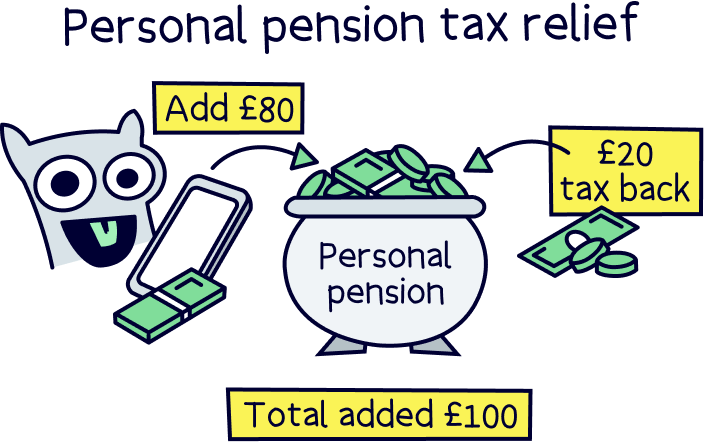
Figures include receiving the State Pension.
Figures include receiving the State Pension.
Figures include receiving the State Pension.
So, for the minimum retirement income of £13,400, at 25 years old, you’ll need to have total contributions of £140 per month, for a moderate pension income, £880 per month, and for a comfortable retirement, £1,370 per month (as mentioned above, tax-free totals).
If you’re already got a pension pot, these monthly figures reduce.
You can try this for your own personal circumstances with our easy to use pension calculator.
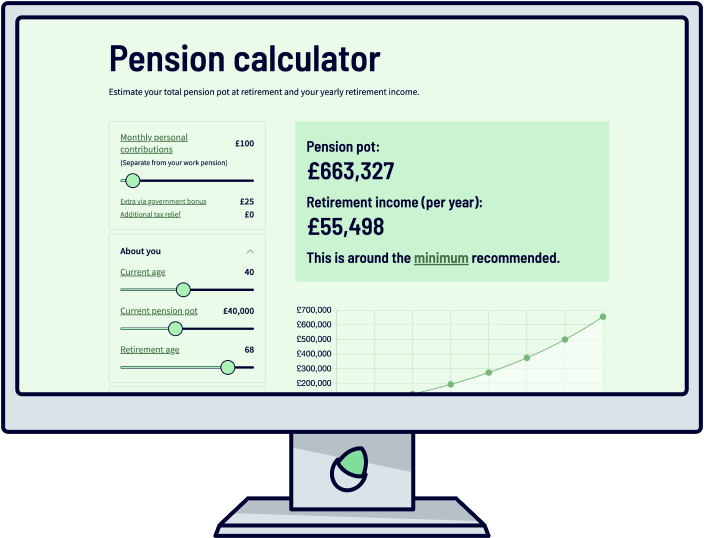
Want a pension but not sure what one to use? Check out our top personal (also called private) pensions.
If you're a bit panicked by the amount you should be paying into your pension, don't worry too much, it’s always a good idea to pay as much as you can reasonably afford – your future self will really thank you.
The sooner you start building your pension (even paying in a little every month), can really increase your pension pot by the time you retire.
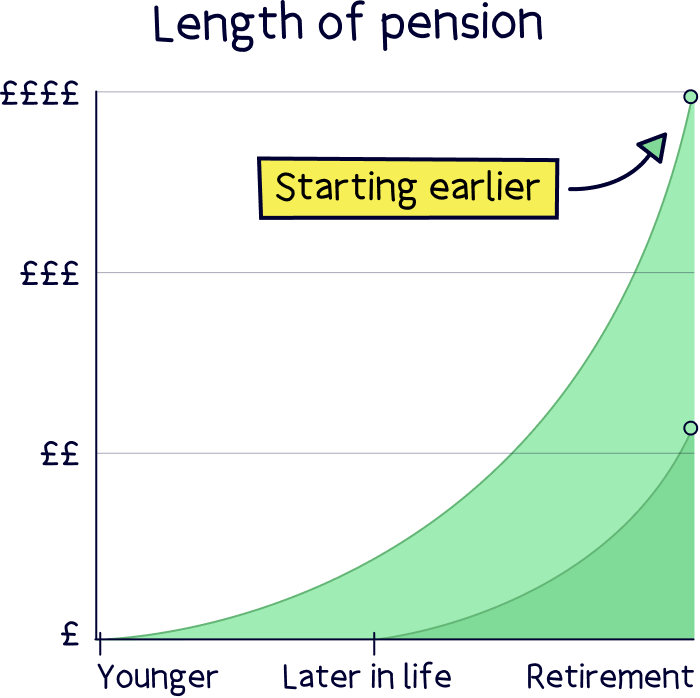
There’s 2 options when it comes to increasing your pension and making pension contributions, the first is to pay more into your workplace pension, and the second is to open a personal pension.
We highly recommend opening a personal pension, unless your employer is willing to contribute more themselves into your pension when you pay in more. Otherwise, the benefits of using a personal pension far outweigh a workplace pension.
With a personal pension, you get to pick the pension provider you want to use, and so you can pick a provider that’s easy to use, has low fees and a great track record of growing money over time (most workplace pension schemes aren’t as good). They also have things such as a phone app to give you full transparency over your money, and make contributions easy.
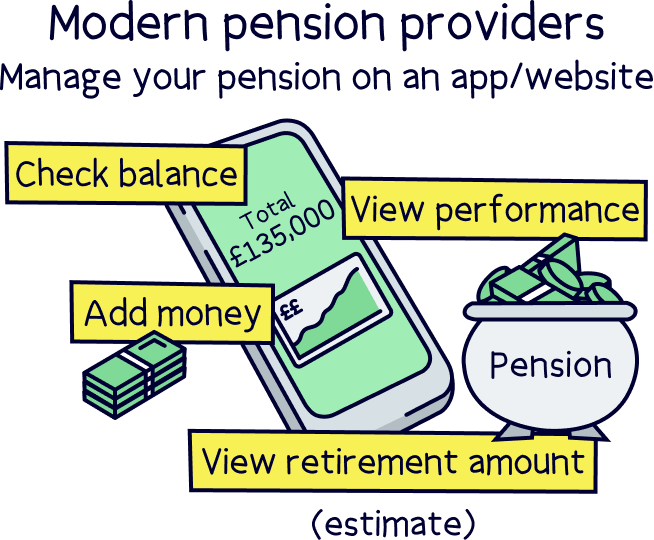
Plus, you get to decide how your money is invested, for instance you could pick a provider with a pension plan that has socially responsible options (e.g. no fossil fuels). We’re big fans of these at Nuts About Money.
If you’re not sure where to find the right personal pension provider for you, check out the best personal pensions. As a spoiler, here’s the top personal pensions:
Boost your pension pot with a personal pension (and get a 25% bonus). Your future self will thank you.
Get £50 added to your pension



PensionBee is our recommended provider – they’ve thought of everything.
Their 5 star rated app (and website) makes it easy to set up and use. You can open a brand new pension, or transfer your existing pensions across (they’ll handle all the paperwork).
Simply pick from an easy to understand range of pension plans, and that’s it, the experts manage everything from there.
It’s low cost, with one simple annual fee. The customer service is excellent, and you’ll get a dedicated account manager for any questions you might have.

And, when the time comes to retire, withdrawing from your pension is easy too.
You can also use them if you're self-employed or a company director.
Great app



A great and easy to use pension. Add money from your bank or combine old pensions into one, (they’ll find lost pensions too).
The customer service is excellent, with support based in the UK.

Beach is an easy to use pension app (and easy to set up), where you just add money and the experts handle everything. It’s all managed on your phone with a great app, and you can see your total pension pot whenever you like.
If you’ve got lost or old pensions, Beach can also find them and move them over too, so you can keep all your retirement savings in one place, and never have to worry about losing them in future.
You’ll get an automatic 25% bonus on the money you add to your pension pot from your bank account (tax relief from the government), which refunds 20% tax on your income, and if you pay 40% or 45% tax, you’ll typically be able to claim the extra back too.
The pension plan (investments) are managed by experts, who are the largest investment company in the world (BlackRock). And they consider things like reducing climate change, meaning your savings could make the world a little better in future too.
You can also save and invest alongside your pension with an easy access pot (access money in around a week), designed for general savings, with the investments managed sensibly by experts too. And money made can be tax-free within an ISA.
Fees: a simple annual fee of up to 0.73% (minimum £3.99 per month).
Minimum deposit: £25
Customer service: excellent
Pros:
Cons:
Boost your pension pot with a personal pension (and get a 25% bonus). Your future self will thank you.
By the way, if you’ve got lots of pension pots all over the place, it’s often a good idea to combine these into a new personal pension, called consolidating your pension. This way, you won’t forget where they are when the time comes to retire, and you can potentially benefit from lower fees and faster growth of your pension.
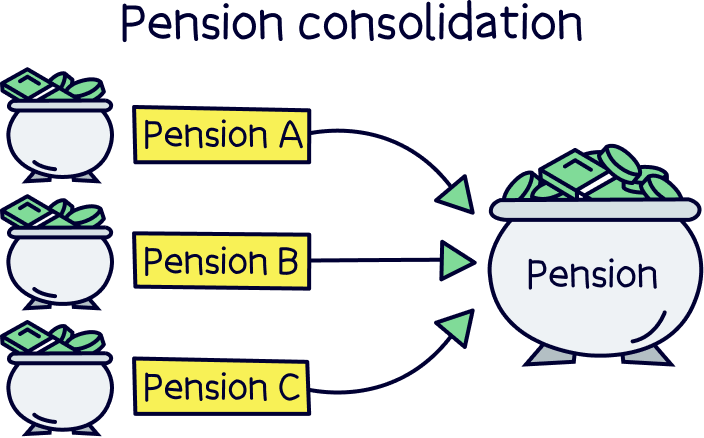
How? Well, with some good providers (like the ones above), they’ll actually reduce their fees if you have more saved with them (and the fees can already be much lower). They can also have a much better investment performance too, which can have a big impact on your total pension pot in the future.
It’s easy to do too, your new provider will handle everything. You just need to let them know which provider your current pensions are with.
Although paying as much as you can into your pension is often a great thing, there’s some limits to think about, although they’re pretty high!
This is your annual allowance, which is where you can only contribute as much as your total annual income each tax year, or £60,000, whichever is lower.
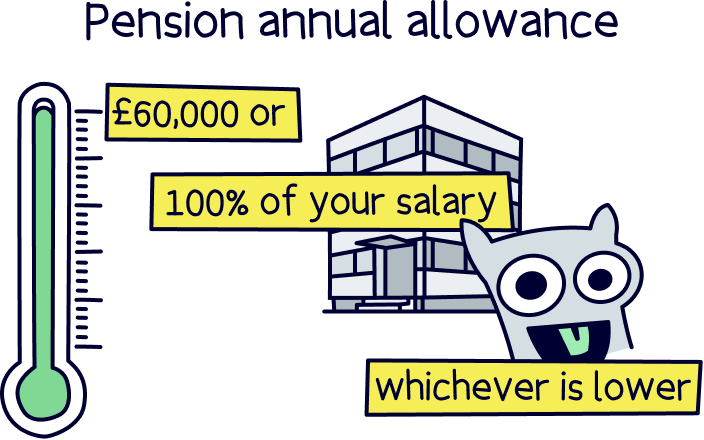
If you might be saving more than this, you can also use a Stocks & Shares ISA in addition to a pension, to keep saving tax-free. Learn more about these with our guide to Stocks and Shares ISAs.
There we have it, that’s how much you should pay into your pension to get the income you’re after in retirement. We hope that’s made everything clear, and not too depressing! If you want a personalised figure, try a pension calculator.
Ultimately, the rule for how much you should pay in, is how much you can afford to spare each month. It will all go towards building a better retirement for yourself, so don’t feel down for not being able to contribute as much as you should be – any contribution is better than none, and your pension will grow over time. And when you’re older, you might be able to add a bit more cash in too.
You also don’t have to retire at age 68. You can retire later on, and lots of people do! That way you can keep earning money and your pension pot can keep growing for when you are ready to retire.
Your best option for your pension contributions is to open a personal pension, this way you have full control over your pension, and can pick a great provider with low fees and a great track record of growing money over time.
If you’re not sure where to find these, check out the best pension providers. Our top recommendation is PensionBee¹ – which is super simple to use and low cost. There’s also Beach¹, you can save within a pension and an ISA (for general savings) at the same time.
Finally, if you want to learn more, visit our pensions home page.
That's it! Try and save as much as possible into your pension, your future self will thank you!
Boost your pension pot with a personal pension (and get a 25% bonus). Your future self will thank you.
Boost your pension pot with a personal pension (and get a 25% bonus). Your future self will thank you.
We’d love to hear from you, and it will help others too.
Boost your pension pot with a personal pension (and get a 25% bonus). Your future self will thank you.